WD Elements Shucking 8.0TB HDD (WD80EMZZ)
These drives were purchased around 02.11.2021 and 18.03.2022.
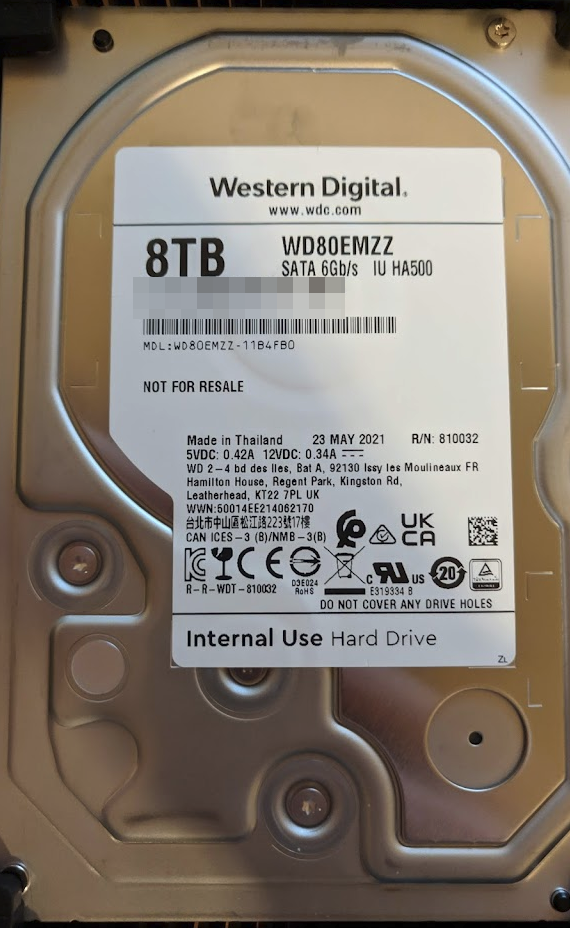
I bought 10 of these drives from Saturn and MediaMarkt in Germany.
There has been a lot of conflicting discussion online about these drives, so I did some research.
These drives are so-called "White-Label" products from Western Digital, which usually means they are similar to other WD drives but with some minor changes, primarily in their firmware.
I decided to investigate the origin of these drives further. For starters, Western Digital does not fill its drives smaller than 12TB with helium.
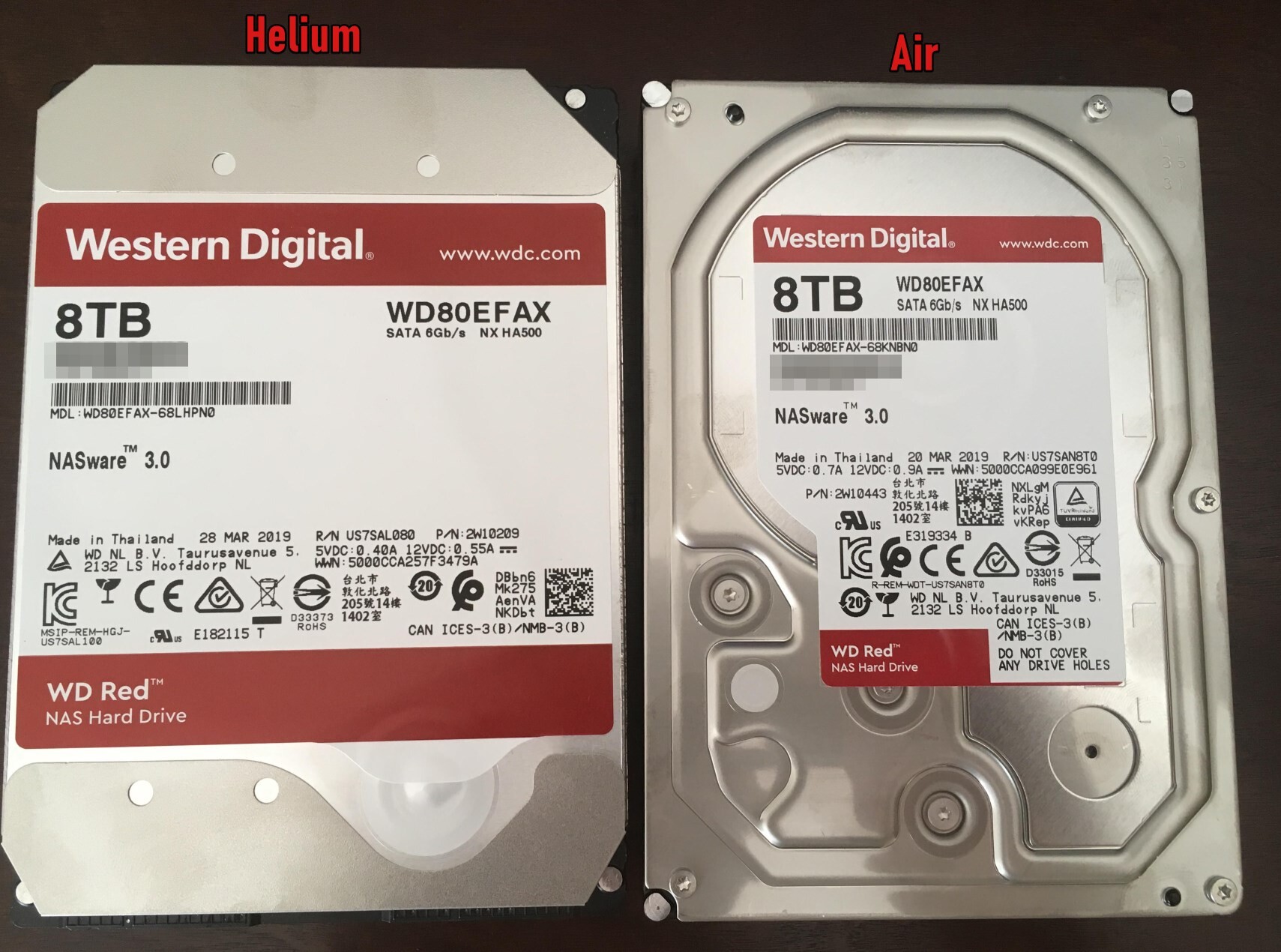
Why does helium matter? Well, helium-filled drives do not get as hot—they typically stay about 10 degrees Celsius cooler.
If you want a drive that stays cool but do not want to spend a lot, you might have to consider larger drives, such as 12TB or more, to get CMR technology.
The Origin of the WD80EMZZ
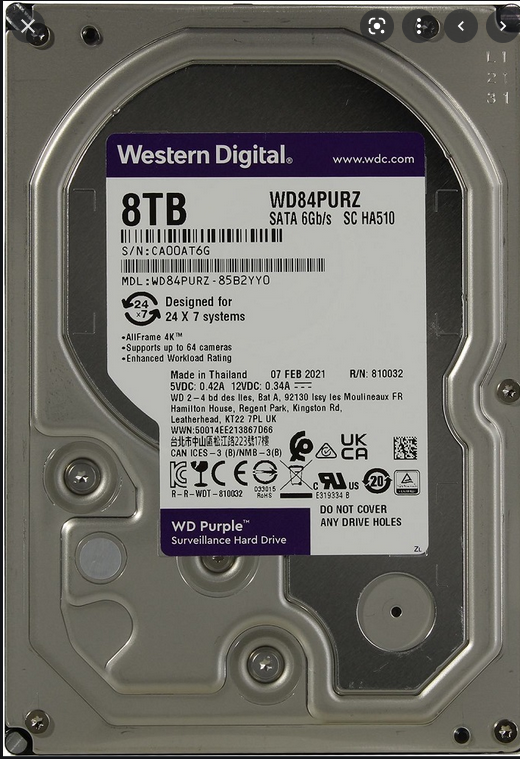
This is it: the WD84PURZ Purple Surveillance HDD.
- Power Specification lining up 5VDC: 0.42A 12VDC: 0.34A
- Really weird RPM of 5640
- CMR Drive (good!)
- Same Country of Origin Thailand
- Both showed up around the same time
Case closed. However, here is some more information if you are interested...
WD84PURZ Datasheet
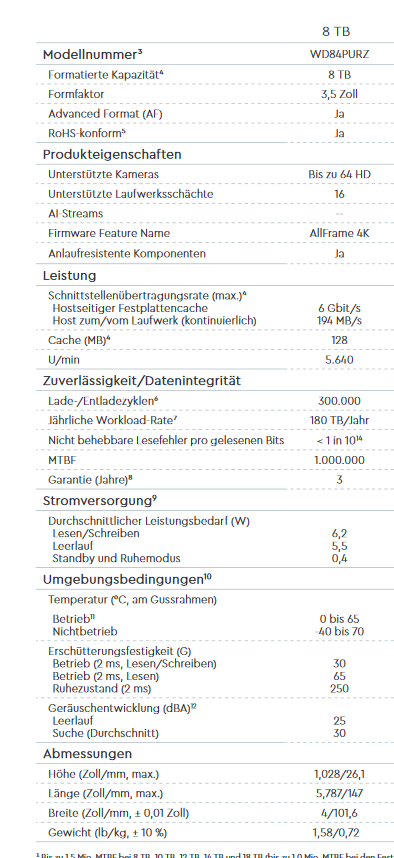
They updated the PDF, and now the RPM specifications are mysteriously missing, so you will have to make do with the German version shown above.
WD80EMZZ Speedtest + CrystalDiskInfo
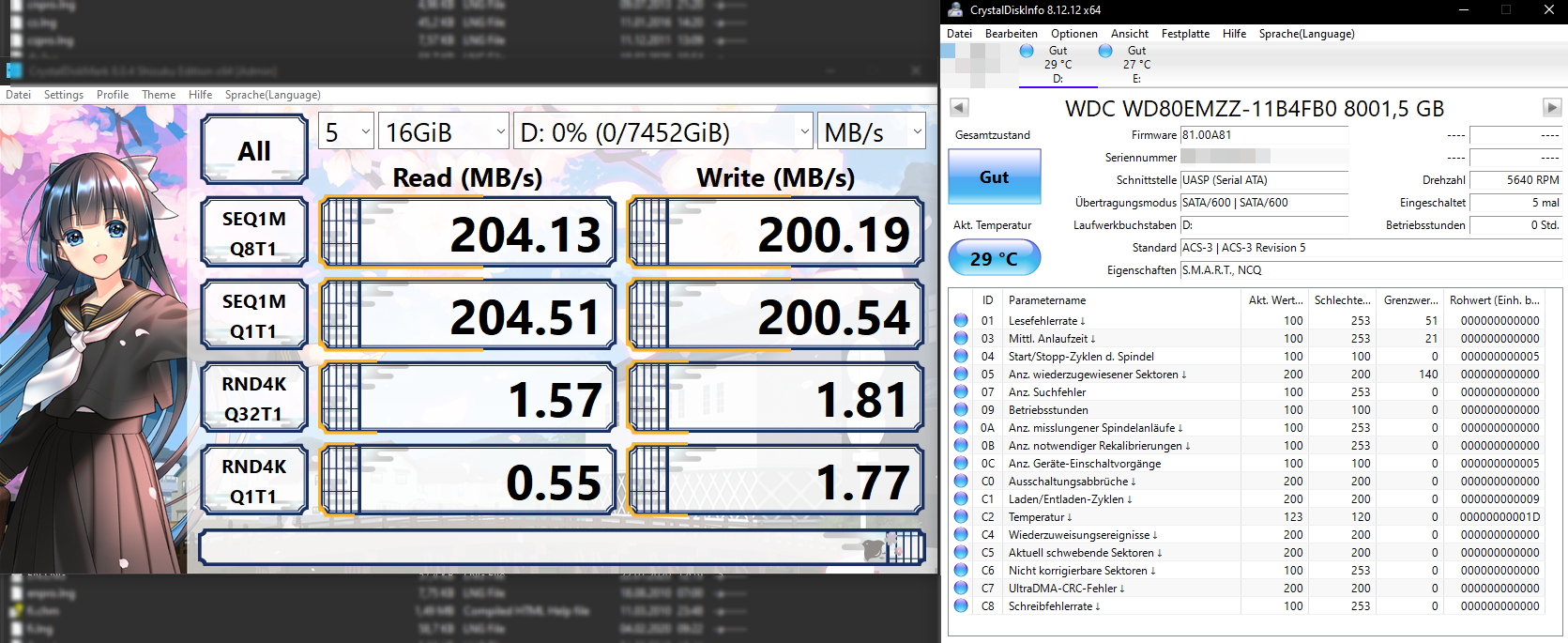
Temperature under full load
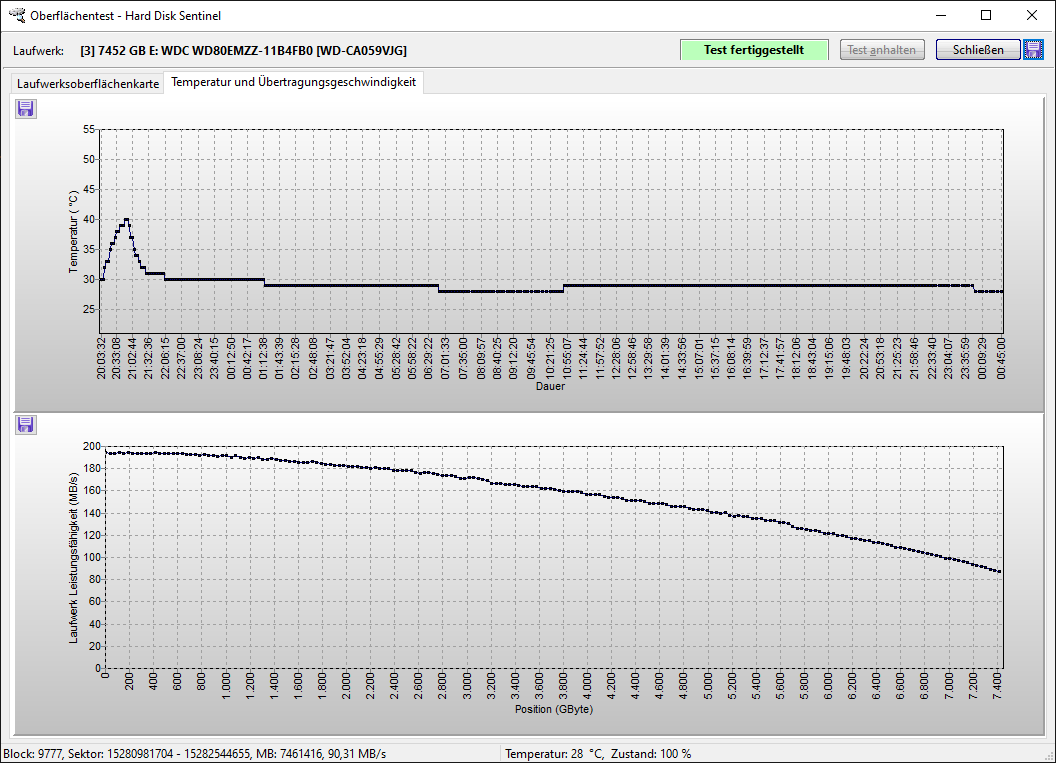
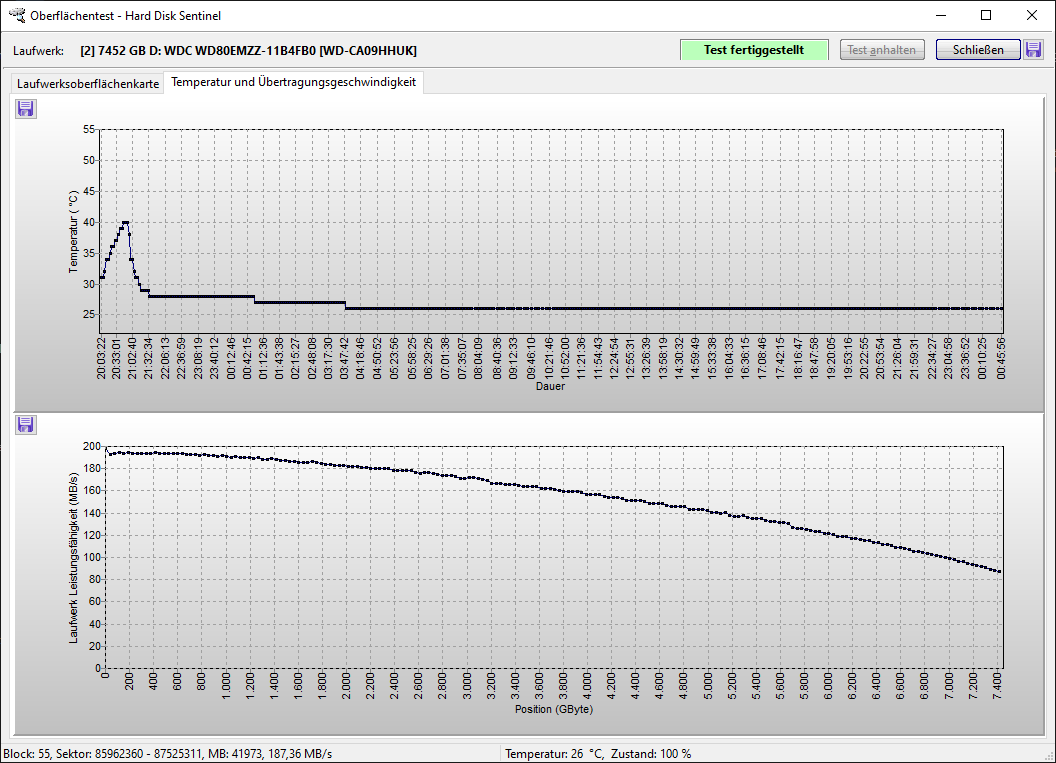
- Room temperature 16°C
In my setup, I found that these hard drives can get quite warm, sometimes reaching temperatures around 50°C when they are still in their cases.
They are designed to handle up to 65°C, but I prefer to play it safe and keep them cooler, around 30°C, when possible.
To better manage the heat, I decided to take the drives out of their original enclosures—a process known as 'shucking'.
This allowed for much-improved cooling. I also added a couple of extra fans to ensure they maintain a lower operating temperature.
Helium-filled drives are popular because they naturally run cooler; however, with my shucked drives and the added fans, I’ve managed to keep the heat at bay effectively.
It is worth noting that despite the drives running hotter than I would like when encased, once removed and with proper cooling, they perform reliably even under the stress of constant use.
Conclusion
After using the first eight drives non-stop for four months, they are still going strong.
The only real issue is the heat, but that is manageable, especially with extra cooling. Plus, acquiring 8TB of storage for around €100 is a deal I am happy with.
They do slow down as they become fuller, with speeds dropping to about 80MB/s, but that is not a significant problem for me.
I hope this information makes it easier for anyone else looking for details on these drives!